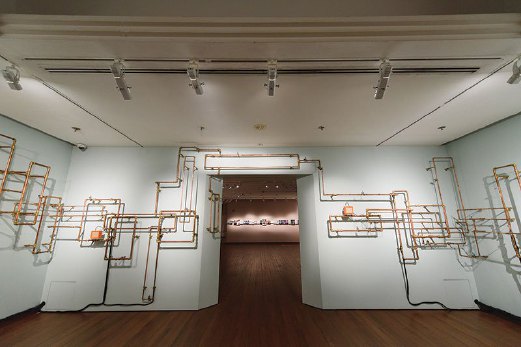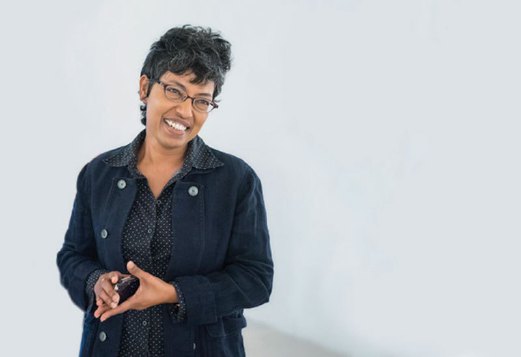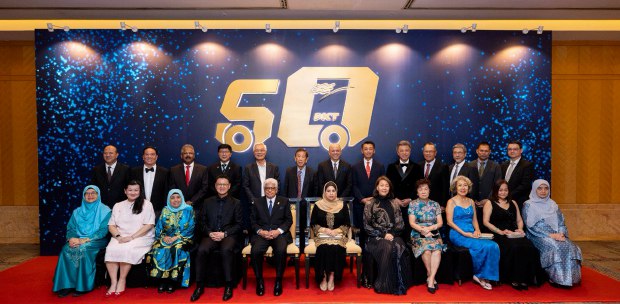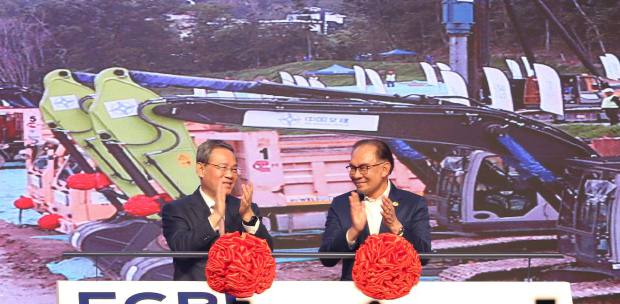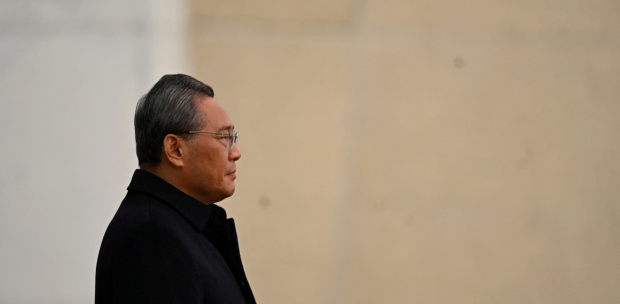The future of Singapore is reflected through the wonderful language of contemporary art, writes Sarah NH Vogeler
I’VE always loved Dutch scholar, professor and author Henderik Roelof “Hans” Rookmaaker’s quote “By means of the iconic, artists express their view of reality and show their understanding of the structure of reality. They see what they know and bring this into their paintings. They always give us more than the facts, more than the eye can see”.
And Singapore Art Museum’s (SAM) latest show — 5 Stars: Art Reflects on Peace, Justice, Equality, Democracy and Progress — which marks the country’s Golden Jubilee, certainly invites contemplation.
An artist’s reflection of these five value was tasked to five of the country’s top names — Suzann Victor on Peace, Ho Tzu Nyen for Justice, and T.K. Sabapathy, Matthew Ngui and Zulkifle Mahmod for Equality, Democracy and Progress respectively.
PAYING HOMAGE
SAM director Dr Susie Lingham says: “Five decades after Singapore’s independence, the founding ideals of Peace, Justice, Equality, Democracy and Progress symbolised by the five stars on our national flag continue to be the cornerstones of our society.
“In paying homage to Singapore’s 50th anniversary, 5 Stars looks to the future of our nation, ruminating upon these national values that connect us all in a universal way. Through the language of contemporary art, the exhibition offers new “thought-spaces” — from our nation’s conscious reflections on its ideals, we recognise the humanist foundations of today’s world,”
Victor’s Bloodline Of Peace is one crazy, brilliant quilt made out of over 10,000 units shaped out of over 30,000 prismatic Fresnel lenses, each one containing a drop of blood donated by members of Singapore’s armed forces, civil defence, medicine, the arts and pioneer generation. This triggered an immediate reaction/ question of what is a Fresnel lens or the blood adorning each prism?
The Fresnel lens was first utilised in the 1800s as the focal point for the rays in lighthouse lamps, and often used as solar concentrators. Now imagine thousands upon thousands sewn together, suspended and spilling, wave-like, from the ceiling. Brilliant-crazy. The artist offered: “Peace is defined by absence — that of war and bloodshed. To be sustainable, commitment and preservation are necessary processes undertaken by civilians while armed and medical personnel are at the frontiers”. And what of the bloodletting? It’s as English writer and visual artist, Clive Barker stated, “Everybody is a book of blood; wherever we’re opened, we’re red.”
Justice, as depicted by Ho in No Man, is a party of six-channel video installation with sound, done in a 15-minute loop. Love this work and even more so because the artist uses the John Donne poem, Meditation XVII — Devotions Upon Emergent Occasions as his entry point. No Man reflects on how all of humankind is knotted, and how painfully tangled we are; facets of Dante’s Inferno are sensed here, where “In the middle of the journey of our life I found myself within a dark wood where the straight way was lost.”
Of Equal Measure, eminent art historian, educator, critic, writer and curator Sabapathy’s entry for Equality is riveting. The book-adorned walls, from T.K.’s own collection-trace the chronology of his four decades of critical writings. Whether this installation was intended to seem unfinished or otherwise, these ecstatic impulses, this “system of reckoning”, gives us an idea of his intimate connection with the works he writes about — that art may be conceived as an invaluable space of equality within the world.
Democracy is a word which has come to mean different things to different people. In Matthew’s Every Point Of View, the artists explores this theme further utilising an absorbing assemblage of real-time video projection and plastic pipes. As you walk guardedly amongst his world of cylinders and tubes, written responses to two questions he posed about democracy are projected and flow onto the pipes. It’s a hushed congress, it’s a loud congress. The artist views the work as parallel to the democratic route: that democracy is an understanding that diverse opinions exist and that it’s within this acceptance that ways to co-exist are planned in concurrence, and at times, not.
The last entry is Zulkifle’s Raising Spirits And Restoring Souls for the last star, Progress. More pipes. In copper. Any less spellbinding? Not a chance. His installation of copper pipes, which grip the walls are further enhanced by a 64-channel controller, amplifiers, piano/ bass/ guitar strings, midi player and other intricate components. The room reverberates with Singapore’s national anthem Majulah Singapura, with the lines “Sama-sama menuju bahagia” (Let us progress into happiness together), the product of an amalgamation of voices courtesy of children from underprivileged backgrounds. The artist ponders, “Do Singaporeans truly follow the song, and what is progress within this milieu?”
AFTER UTOPIA
SAM at the same time also showcased After Utopia, which concluded last month, and President’s Young Talents Award, the latter producing two winners, Ezzam Rahman and Ong Kian Peng. It must have been incredibly difficult to choose amongst the two: Ezzam’s Here’s Who I Am, I Am What You See. Creepily-beautiful flowers fashioned out of his own dead skin, encased in see-through containers and spread throughout an entire room is the kind of thing you’d expect Hannibal Lecter to have as a hobby.
And Kian Peng’s wondrous two-part installation laments on how our urban environment is severed from the certainty of climate change in Too Far, Too Near, (footage recorded by the artist during his sojourn to Greenland) is a trip down Alice’s borough. Both are mesmeric, powerful works and with an inner seething in each one, almost apoplectic. You’re afraid and fascinated at the same time.
And After Utopia, where’s the space to write it all? Revisiting the ideal in Asian Contemporary Art, After Utopia showcased works from mostly SAM’s permanent collection, as well as artists’ collections and brand new commissions.
The highlights include, from the collection of Dr Farish Noor, Sir Walter Raleigh — Map of West Asia and Map of East Asia and John Walker — A Map of Java. Looking at these, it makes you want to ask for the glass casing to be removed so you can finger-trace the exquisite drawings.
In the former, Sir Walter Raleigh was of the opinion that Eden was located in the East, as can be seen through his work in The Historie Of The World. In Five Bookes, he detailed these thoughts in a series of maps. The latter, the Raffles - Walker map is an incredible documentation of Java’s topography and its mapping of colonial supremacy.
And of course, there’s Malaysia’s J. Anu’s MA-NA-VA-REH — Love, Loss And Pre-Nuptials In The Time of The Big Debate. “Inspired” by Malaysian politics and South Asian visual culture, Anu presents a body of works which compel audiences to examine our differences, and though we must accept that disillusionment is a thing finite, hope is infinite, and must never be abandoned.
And in the immortal words of Utopia’s author Thomas More, “To tell you the truth, though, I still haven’t made up my mind whether I shall publish at all. Tastes differ so widely, and some people are so humourless, so uncharitable, and so absurdly wrong-headed, that one would probably do far better to relax and enjoy life than worry oneself to death trying to instruct or entertain a public which will only despise one’s efforts, or at least feel no gratitude for them.”
From 1971’s film version of Roald Dahl’s Willy Wonka And The Chocolate Factory, the song Pure Imagination: -
Come with me and you’ll be
In a world of pure imagination
Take a look and you’ll see
Into your imagination
We’ll begin with a spin
Trav’ling in the world of my creation
What we’ll see will defy
Explanation
If you want to view paradise
Simply look around and view it
Anything you want to, do it
Want to change the world, there’s nothing to it
There is no life I know
To compare with pure imagination
Living there, you’ll be free
If you truly wish to be
5 Stars — to walk along each corridor and see, feel, breathe possibilities which transcend — this is simply Pure Imagination.
Art-making, art-thinking
The Singapore Art Museum (SAM) is a contemporary art museum which focuses on art-making and art-thinking in Singapore, Southeast Asia and Asia, encompassing a worldwide perspective on contemporary art practice.
It advocates and makes accessible interdisciplinary contemporary art through research-led and evolving curatorial practice. Since it opened in January 1996, it has built up one of the most important collections of contemporary art from the region.
It occupies two buildings: the old St Joseph’s Institution on Bras Basah Road, built in 1855 and now a National Monument; and at 8Q, a conservation building across the road on Queen Street that was the old Catholic High School.



